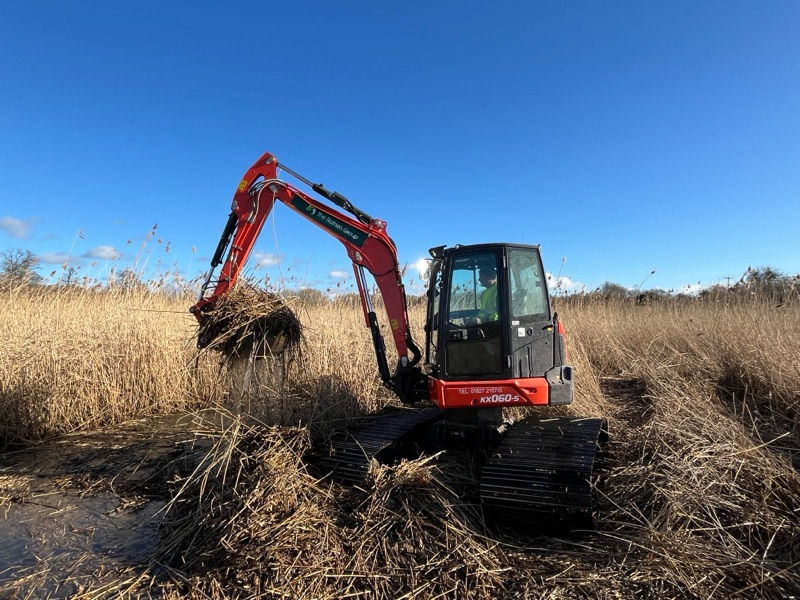
Nicospan Canal & Riverbank Protection
Soft Protection. Strong Results.
Nicospan supports natural regeneration – without compromising stability.
Bank Protection Services
Our Specialist Nicospan Canal & Riverbank Protection Services
Nicospan is a cost-effective, environmentally sensitive solution for canal and riverbank erosion control – especially in low-traffic or ecologically sensitive areas. The Rothen Group installs Nicospan systems across the nation’s waterways to safeguard banks and support habitat creation.
We use a combination of coir rolls and soft backfill as part of our Nicospan solutions. Its flexible, open-weave structure allows vegetation to grow through the material. This vegetation then secures and stabilises the bank via its root structure and creates a new habitat for local insects, animals, and fish.
Nicospan isn’t just a protective barrier – it’s a tool for restoration. But it must be used correctly. We assess each site and recommend the best approach – from positioning and anchoring to advising on seed mixes and soil types.
Need help protecting a soft bank or sensitive watercourse? Contact The Rothen Group to arrange a site assessment.


Gallery

FEATURED CASE STUDY
Habitat Creation Coney Meadows, Droitwich
Coney Meadows is part of a nationwide project to restore the UK’s wetlands. Since the 17th century, large areas of reedbeds have been stripped and converted into agricultural land, massively reducing the number of habitats available for wetland animals.

FEATURED CASE STUDY
Changing the Shape of the River Derwent, Derby
Following the storm seasons of 2023 & 2024, the EA set out to review its impact on the UK’s waterways. The River Derwent in Derby was flagged after a sonar scan of its navigation identified a scour hole – a direct result of heavy rainfall pushing sediment downstream.
Nicospan is a flexible, geotextile erosion control system that naturally stabilises canal and riverbanks. In nature, there are no concrete retaining walls or steel piling. Riverbanks, though they erode, are stabilised by plant roots, reed beds, and other organic features.
Nicospan bank protection forms a barrier that holds back soil and allows vegetation to grow through its structure. In time, it forms the ideal soft bank protection in low-traffic or ecologically sensitive areas.
What is Nicospan bank protection?
Nicospan works best on smaller waterways or areas with low usage and minimal boat wash. It’s often used where hard engineering (like sheet piling or gabions) would be too invasive or out of character — such as in heritage zones or ecologically sensitive sites.
Where is Nicospan most suitable?
Yes. Unlike other options, Nicospan is a form of environmentally sensitive bank protection. When combined with coir rolls, topsoil, or appropriate seeding, Nicospan forms natural plant fringes – perfect for local wildlife. It can significantly boost the biodiversity of a site.
The other benefit is that it’s simple to install where access is limited. It minimises the disruption to the local environment, allowing stakeholders to protect banks and nearby pathways without extensive works.
Is Nicospan environmentally friendly?
Yes. In fact, we highly recommend combining several environmentally friendly bank stabilisation options for the best results.
Nicospan is often installed alongside coir rolls, brushwood bundles, or biodegradable matting to provide extra protection and improve habitat quality. Our team will advise on the right combination for your specific site conditions.
Can Nicospan be used with other erosion control methods?
In a sense, Nicospan is designed to degrade. The system can quickly become overgrown with vegetation in just a few years, providing lasting stability. That’s the point. Once it reaches its climax state, the durability of the site depends on exposure and maintenance. The vegetation itself is self-sustaining, doing most of the erosion control.
How long does Nicospan last?
Piling and gabions are more robust but also more labour-intensive, disruptive, and less ecologically sensitive. They’re essential in high-risk areas or where there’s active bank failure.
Nicospan, by contrast, is ideal for lower-energy environments — like quiet canal stretches or remote riverbanks. It supports natural regeneration, allowing vegetation to stabilise the bank over time rather than acting as a rigid barrier.
What’s the difference between Nicospan and hard bank protection like piling or gabions?
FAQ
Your Questions Answered
contract services
Related services
about us
A decade of
The Rothen Group
The Rothen Group is a trusted name in waterway maintenance and soft engineering. We work across the UK’s canals and rivers, delivering practical, environmentally responsible solutions for erosion control, restoration, and infrastructure support.
Our team has extensive experience installing Nicospan systems, often as part of wider soft bank protection strategies involving coir rolls, backfill, and sensitive planting. Whether you’re restoring a heritage canal or stabilising a low-traffic riverbank, we offer advice, equipment, and installation expertise to get the job done properly — and with minimal environmental impact.















